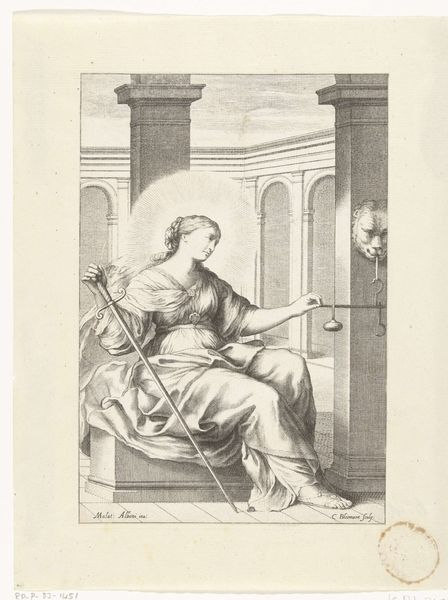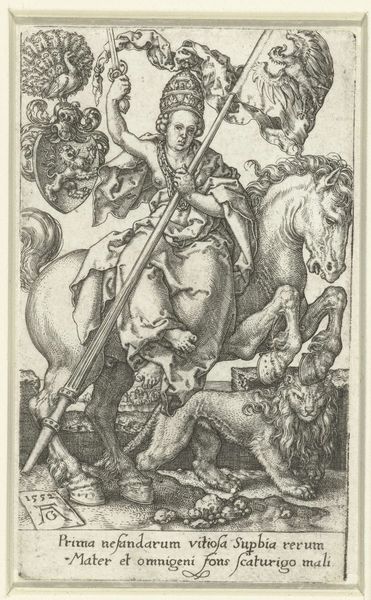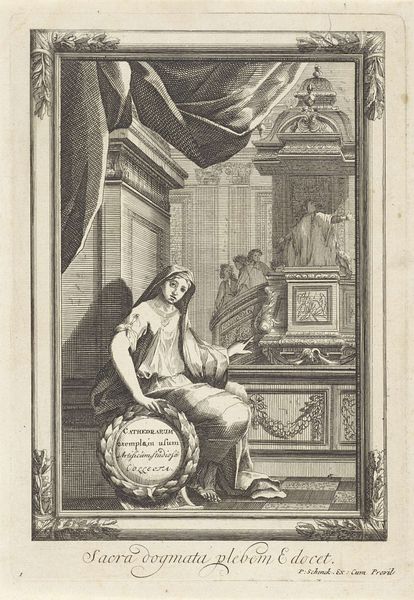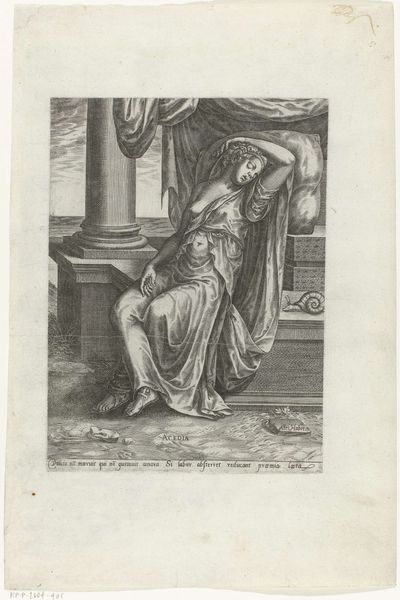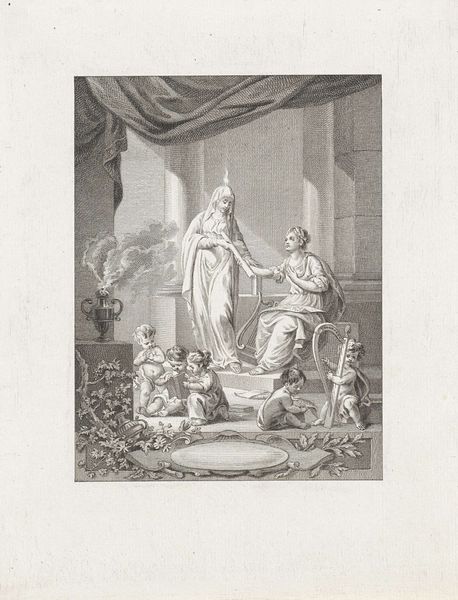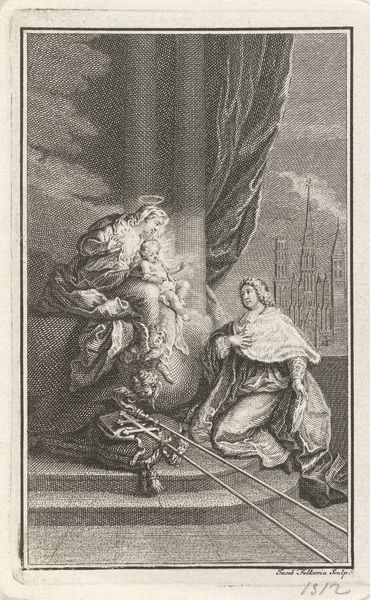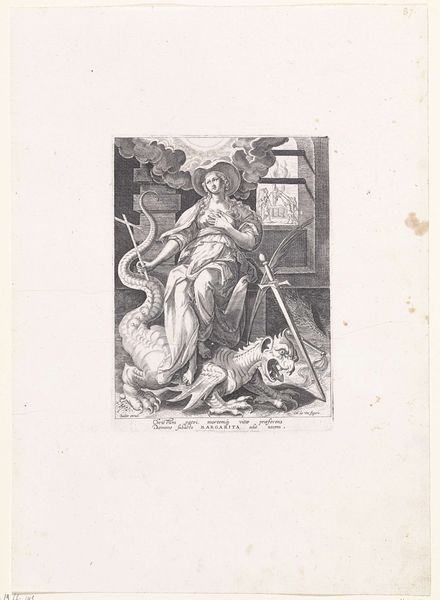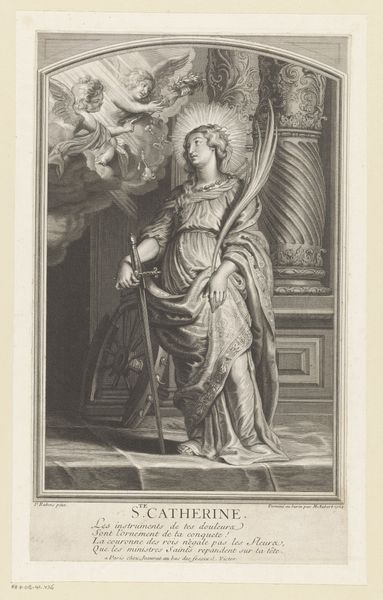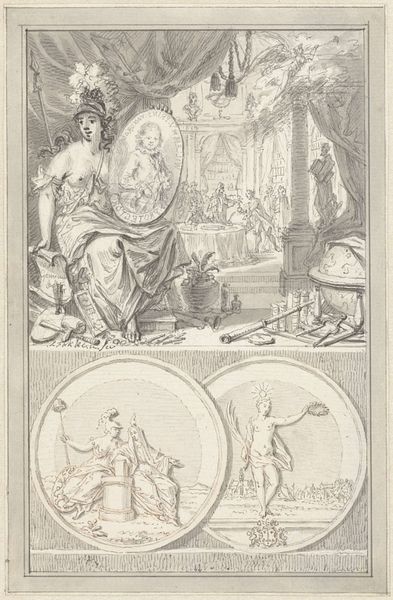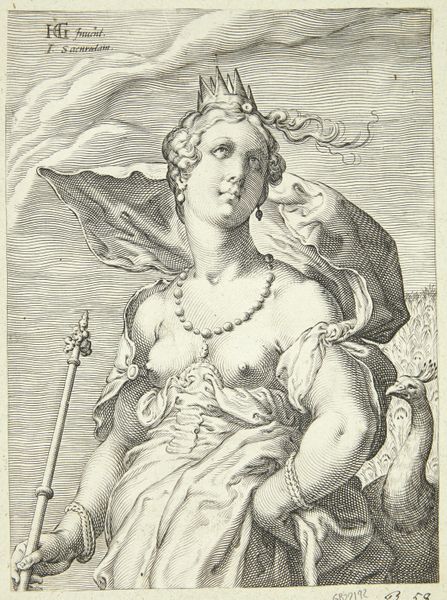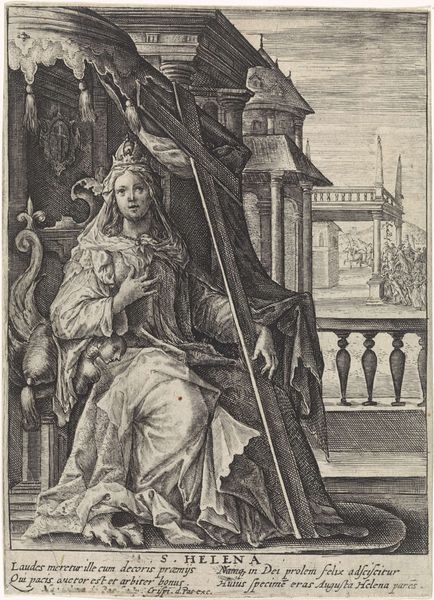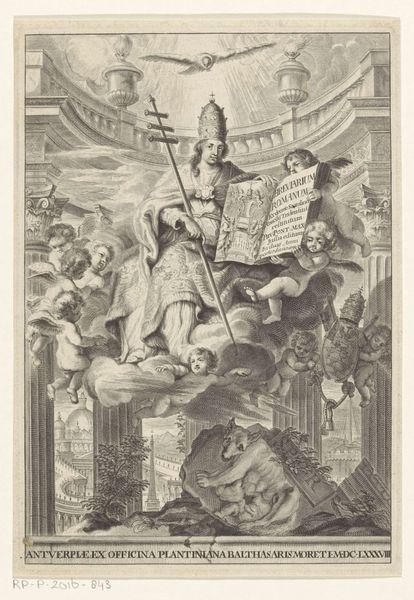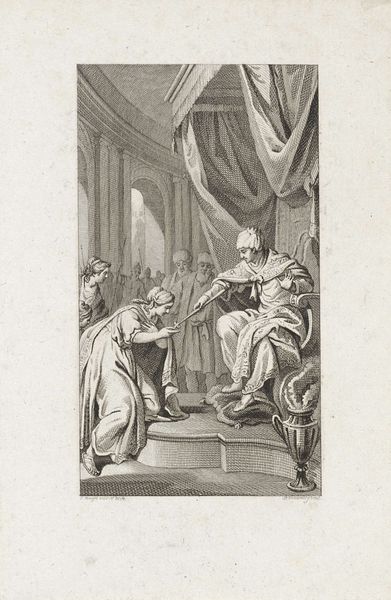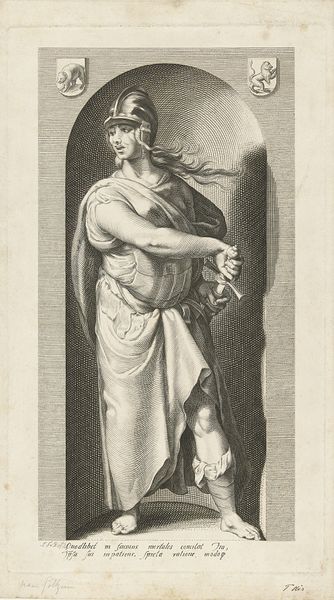
print, engraving
#
allegory
#
baroque
# print
#
old engraving style
#
figuration
#
history-painting
#
engraving
Dimensions: height 204 mm, width 137 mm
Copyright: Rijks Museum: Open Domain
Curator: Looking at this print, "Docilita," created around 1640 by Cornelis Bloemaert, currently held at the Rijksmuseum, I am immediately drawn to the sheer ornateness of the composition, all rendered with incredible precision in engraving. What stands out for you? Editor: My eye goes straight to the central figure, enthroned yet somehow veiled, holding a rather imposing staff. The figure emanates a palpable sense of subdued power, suggesting a story unfolding through symbols. Curator: Absolutely. The image, allegorical in nature, presents "Docilita," or Docility, as a virtue. The woman’s gentle, almost maternal expression contrasts sharply with the architectural grandeur and the mythical creature supporting her throne, creating an interesting tension. Do you notice how this juxtaposition creates narrative depth? Editor: I do. Notice the contrasting textures of the engraving, from the soft drapery to the sharp architectural lines? It feels almost as if Bloemaert is contrasting earthly versus divine, and using Docility as the tether point, but also note that the staff seems at odds with what docility actually is. Curator: Indeed. That staff acts as a scepter and a symbol of authority, and speaks to the symbolic associations of "Docility," in its Baroque conception, encompassing not just meekness but also teachability and the ability to be led toward truth. The semiotics are clear; it stands as an instrument that directs. What does the architecture reveal for you? Editor: Beyond framing, the architecture lends itself to a study of ideal structure—columns supporting a structure, which allows us to further analyze the virtue and how we may find our roles as supports within these frames, or whether the frames dictate and oppress individual purpose. What do you feel is left out from this representation of Docility? Curator: A crucial element, and potential counterpoint, might have been adding struggle or opposition; this seems idealized to the point of losing nuance. Perhaps in his vision, that simply wasn't the story he intended to relay. Editor: Interesting; the visual experience for me is one of thoughtful contemplation. What was conceived nearly 400 years ago gives so much to discover upon inspection. Curator: I agree. Exploring this work shows us not only Bloemaert's craftsmanship but also reveals how symbolic representation shapes cultural values.
Comments
No comments
Be the first to comment and join the conversation on the ultimate creative platform.
